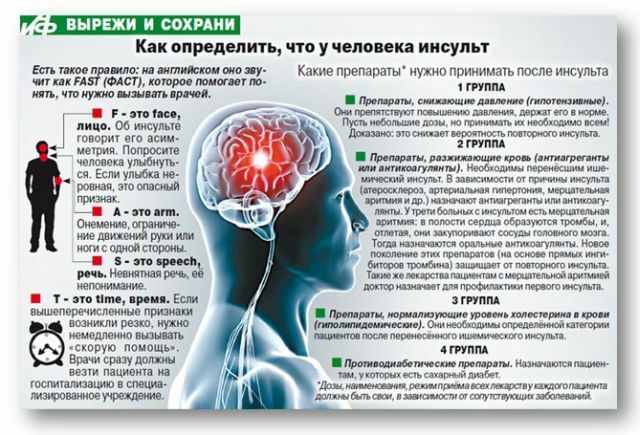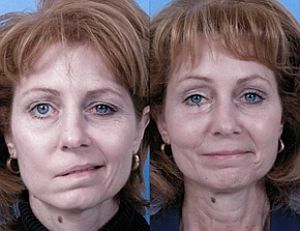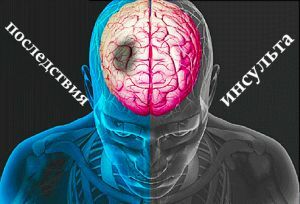 Hypertension and cardiac arrhythmia, elevated cholesterol, smoking and alcoholism - each of these factors increases the risk of stroke.
Hypertension and cardiac arrhythmia, elevated cholesterol, smoking and alcoholism - each of these factors increases the risk of stroke.
Obesity and the use of hormonal contraceptives are no less dangerous. Acute circulatory disturbance in the brain is a consequence of the formation of a thrombus( ischemic stroke) or rupture of a blood vessel, hemorrhage( hemorrhagic stroke).With a person there are irreversible changes associated with the necrosis of cells, which are responsible for important functions of the body.
Worst of all, if this disease suddenly affects a completely healthy-looking person. The consequences of stroke are often deplorable, and the prognosis is disappointing - disability or death. ..
Contents
- Depressing statistics
- Symptoms of
- Consequences of ischemic stroke
- What is fraught with hemorrhagic form of violation
- Spinal stroke
- Extensive brain damage
- Left hemisphere under threat
- Right-sided stroke
- What canexpect at stroke stroke
- Coma -
- Risk reduction
- Probability of disability
- How many are aliveso after a stroke?
Depressing statistics
Stroke is one of the most dangerous vascular pathologies. World statistics claims that annually on the planet from this disease affects about 9 million people and this figure is growing rapidly.
It used to be that the elderly part of the population is exposed to an acute disruption of the blood circulation of the brain. However, every year the disease is getting younger. Approximately 25% of patients do not reach the age of 65 years. Of those who have suffered a stroke, only 20% remain fully able-bodied. 
Pathology can happen to anyone. There are cases when a stroke is detected in children and even infants. In this case, the cause is congenital defects, which are due to poor heredity.
Manifestation of stroke depends not only on age. The occurrence and course of the disease in women and men occurs in different ways. For the male half the critical age is 40 years. The danger for women increases after 60. And the deplorable consequences of a stroke for the latter are much harder.
In any case, the main factor in the favorable outcome of a stroke is time, the sooner the patient will be taken to a medical facility, the more realistic his chances of maintaining health, minimize the consequences and not die.
Symptoms of danger
 Stroke sometimes occurs with little or no visible signs. However, there are symptoms that clearly indicate a malfunction occurring in the brain. Depending on the hemisphere( left or right), the opposite part of the body is affected.
Stroke sometimes occurs with little or no visible signs. However, there are symptoms that clearly indicate a malfunction occurring in the brain. Depending on the hemisphere( left or right), the opposite part of the body is affected.
The most likely time to attack is late night and early morning.
Common signs indicating a stroke are:
- loss of sensitivity and numbness in the facial muscles, weakness in the arms and legs( most likely, with symptoms that affect one half of the body);
- abnormal speech, difficult due to numbness of the muscles of the mouth;
- instant visual impairment( damage affects the left or right eye, or even both at once);
- uncertain, uncoordinated movements;
- uncontrolled gestures;
- whirling head;
- uncaused, sharp headaches.
Consequences of Ischemic Stroke
In ischemic stroke, arteries feeding the brain are clogged, causing neuronal death of the affected area and causing the following consequences:
- Reduction of motor functions - the appearance of weakness in the extremities. Uncertain possession of them. The complexity of producing even
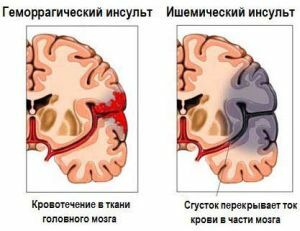 simple movements.
simple movements. - Deterioration of sensitivity of nerve endings in the limbs and facial part of - restoration of fibers of nerve endings is slower than muscle endings, so sensitivity can be long absent, even when muscle strength is restored.
- Cognitive impairment is a partial loss of memory reflected in the forgetfulness of the usual things( phone numbers, addresses, names of relatives, etc.).Children have a loss of the definition of location in space and time.
- Speech disorders - more often accompany left-sided ischemic stroke. The patient utters incoherent words that are difficult to make out. It is difficult for him to pronounce certain phrases and clearly pronounce the letters.
- Mental disorders - the occurrence of post-stroke depression, expressed in a sense of despair. There is aggressiveness, fear, a sharp change in mood, uncoordinated actions.
- Difficulty swallowing - the opportunity to choke with water and ordinary food in a completely innocuous situation. Often leads to death.
- The manifestations of epilepsy - about a fifth of people who underwent ischemic stroke, begin to suffer seizures.
- Uncommon operation of the pelvic organs - accompanied by uncontrolled urination and feces.
What is fraught with hemorrhagic form of violation
The consequences accompanying hemorrhagic stroke, in many respects similar to the manifestations of ischemic. Their difference is in a more severe form of leakage. The following violations are observed:
- pronunciation difficulty and delayed speech perception;
- complications with swallowing movements;
- limited limb possession or complete paralysis;
- attenuation of care and inadequate environmental assessment;
- weakening of mental abilities, loss of memory;
- depression, accompanied by frequent changes in mood;
- appearance of excessive aggression, followed by complete apathy;
- delayed response;
- vision impairment;
- severe pain in different parts of the body;
- occurrence of epileptic seizures.
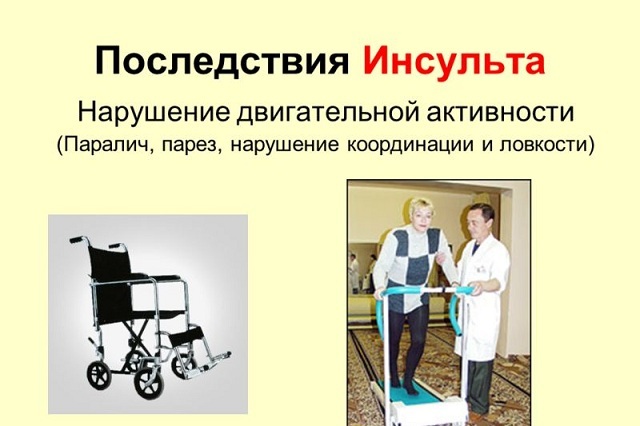
Spinal stroke
With spinal stroke, circulatory disturbance occurs in the spinal cord. This is a very serious illness leading to loss of ability to work and even complete paralysis. Other effects:
- Partial hysteria or anesthesia - loss of sensation in some parts of the body. The person ceases to feel pain,
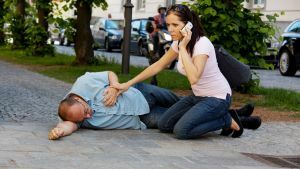 temperature changes. It is difficult to determine the objects by touch.
temperature changes. It is difficult to determine the objects by touch. - Paresis of the limbs - weakened muscles, the difficulty of independent movement and the inability even of small physical exertion.
- Violation of urination and defecation - urination ceases to be controlled, can manifest itself in the form of a constant discharge of drops. Difficulty of excrement or vice versa uncontrolled.
Spinal stroke is treatable. With timely access to health professionals and rehabilitation, a 100% return to work can be made.
Extensive brain damage
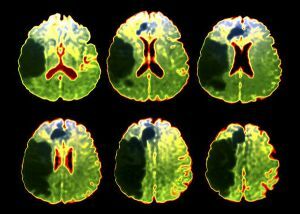
With a large stroke, most of the left or right half of the brain is affected.
This is due to occlusion, both partially and completely, of the large blood vessels that feed the brain.
The following types of this are fraught with serious complications and consequences of the disease:
- Hemodynamic - affects a large area of the brain. It occurs suddenly and is accompanied by a sharp increase in blood pressure.
- Lacunar - lesion of perforating vessels of the brain. Has a slow leak, usually during sleep.
- Atherothrombotic - occurs with pathology in the circulatory system. It has a long clinical course. With the timely detection of a thrombus, it becomes predictable, which affects the success of treatment.
- Cardioembolic - occlusion of the main arteries of the brain. May be partial or complete.
- Micro-inclusive - occurs with disorders associated with blood coagulability.
In case of extensive stroke, it is especially important in which hemisphere of the brain occluded( right or left side of the brain), depending on the hemisphere, the following consequences are possible.
If the right hemisphere is affected:
- paralyzed muscles of the left half of the body;
- memory loss, deterioration of thought processes;
- delayed reaction or complete failure of the facial muscles of the left side of the face;
- apathy, indifference to everything and a sense of despair.
Right:
- strongly pronounced change in speech and movements of the face;
- paralyzes the right side of the trunk;
- obvious mental disorders, unpredictability;
- mental retardation.

Left hemisphere under threat
Ischemic stroke of the left side is observed more often right-sided. Approximately, this figure is reduced to 57%.The left half of the brain is responsible for speech and logical thinking, which, in addition to the characteristic common disturbances, causes the following consequences:
- speech changes greatly, becomes vague, is expressed in scraps of phrases, the diseased loses the meaning of what has been said;
- there is a loss of sensitivity of the right side of the face, hands and feet, all this is accompanied by paralysis;
- becomes impossible to read, write, articulation is lost;
- the patient does not understand what he is saying;
- a person is removed from the outside world, becomes secretive and self-contained.
Right-sided stroke
Circulatory disturbance in the right side of the brain is not so pronounced in the symptoms, therefore, the definition of a stroke here occurs somewhat later than with lesion of the left hemisphere of the brain. 
In this regard, the treatment is delayed, which leads to the necrosis of the majority of cells and accordingly, the consequences for stroke of the right side are less favorable:
- paralysis of the left side of the face, left arm and leg occurs;
- the person ceases to control the movements of even partially paralyzed limbs, he begins to feel that a much larger part of the body is affected;
- memory suffers greatly, forgetfulness manifests itself even to obvious, vivid actions;The
- person does not understand where he is, can not determine the distance and loses the sense of application effort. Independently can not get dressed and do the simplest job;
- the patient falls into a deep depression and shows complete passivity to the environment.
What to expect with stroke stroke
For all forms of stroke, the following complications and health consequences are observed:
- Pressure - an elevated index of blood pressure, immediately after a stroke, indicates the activation of the cardiovascular system, which tries to eliminate the consequences of circulatory disorders. Rarely affects the further course of events unless it causes cerebral edema and hypertensive encephalopathy, which can lead to a recurrence of the stroke.
- Temperature - an increase in this indicator in the post-stroke state is observed quite often. This is a bad harbinger. Increases sweating, although the state of health does not suffer at all. The temperature is almost impossible to bring down to normal values. The presence of such a manifestation worsens the prognosis of recovery and increases the risk of death by about 30%.
- The congenital state of is loss of control over behavior, depression and inhibition of reactions. It is observed in 20% of patients, especially after hemorrhagic stroke.

- Seizures - may appear immediately after the outbreak after some time. In ischemic stroke, 3% of patients are observed. When hemorrhoid, the indicator reaches 8% and higher.
- Headaches - this factor is typical for up to 65% of patients who have suffered a stroke. He is most vulnerable to the female half of the population, especially in his youth. To eliminate headaches, an individual approach to each patient is used.
- Paralysis of - results in loss of motor function in half of the body, depending on the stroke of the right or left side of the brain. May be accompanied by loss of vision and deafness.
- Memory loss is a frequent consequence of the types of stroke, it is partial and complete. It is expressed in amnesia, hypnosis, hypermnesia and paramnesia.
- Speech disorder - accompanies a left-sided stroke. It may be partial or complete, depending on the vastness of the affected area of the brain. Expressed in the wrong pronunciation of sounds, inconsistencies in words and phrases, incoherence.
- Motor - weakening of the muscles of the hands, inability to produce small work. Depends on the severity of the stroke and is restored by special exercises.
Comatose state - not uncommon
The main signs of coma in stroke are:
- no response to external stimuli;
- unconsciousness;
- spontaneous bowel movement.
It is possible to maintain the swallowing reflex, which facilitates the patient's nutrition. The coma is expressed in four degrees:
- A slight damage to the brain cells of the .Loss of consciousness, but the preservation of reflex functions. Encouraging indicator.
- Deep sleep with heavy breathing .Absence of reactions to touch and pain. Convulsions.
- Loss of consciousness of with lowering of blood pressure and temperature.
- Large area of brain damage .Death.
In any case, the role of time is important for saving a patient. The critical indicator for coma is 1 hour.
Risk reduction
Stroke can manifest itself in almost everyone, regardless of age, gender and work activity. The risk of this disease can be significantly reduced if:
- lead a healthy lifestyle( to quit or at least reduce the use of alcohol, smoking);

- monitor your blood pressure;
- should be checked for atrial fibrillation, which will reduce the possibility of blood clots;
- constantly know the level of cholesterol;
- in diabetics do not deviate from the requirements of the attending physician;
- engage in physical education and strengthen immunity;
- to follow a diet.
Probability of disability
Any brain disease is one of the most difficult and even with timely action and a high level of medical development, adverse effects are observed almost always.
With ischemic stroke, only in ten cases out of a hundred, the patient can fully recover. In others, disability occurs, the degree of which depends on the severity of the transferred illness and the level of rehabilitation in the post-stroke state.
With hemorrhagic stroke two of three people are given a disability.
How many live after a stroke?
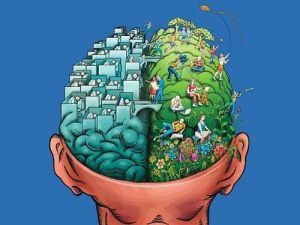 No matter how the medicine and the standard of living of mankind developed, the statistics of strokes is far from disappointing. In the first months after the disease, death is observed in 35% of patients.
No matter how the medicine and the standard of living of mankind developed, the statistics of strokes is far from disappointing. In the first months after the disease, death is observed in 35% of patients.
A little more than half live to the end of the year. In the future, the risk of death is somewhat reduced.
A large number of deaths are associated with relapse of the disease, are directly related to:
- untimely requesting help in a medical institution;
- by the age of the patient;
- state of health prior to stroke;
- the level of the patient's life and the quality of his services;
- compliance with the regimen determined by physicians during the post-stroke period;
- chronic diseases;
- stress and nervous state.
The greatest danger to a person remains his disdain for the disease and ignorance of its consequences. In this case, the lack of education often leads to a sad end.
Therefore, for everyone( especially in adulthood) it is advisable to know at least the basics of stroke manifestations and to pay attention to one's health.

